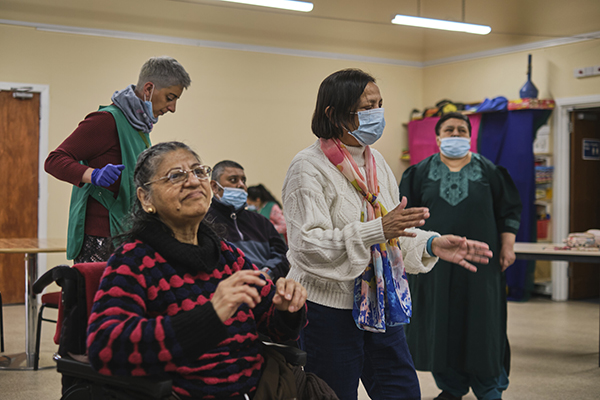Type 2 diabetes sub-groups could guide future treatment approaches in primary care
Researchers in the Clinical Effectiveness Group (CEG) have identified sub-groups of type 2 diabetes, which could inform a personalised approach to managing the condition. The study, published in the British Journal of General Practice, uses data from the multi-ethnic population of east London and analyses standard metrics that are routinely recorded by GPs.

Credit: Age-positive image library, Centre for Ageing Better
The study uses data from CEG’s East London Database, which is an anonymised annual snapshot of health records held by GPs in the London boroughs of Tower Hamlets, Hackney and Newham. The researchers analysed data on 32,000 adults with type 2 diabetes from the point of diagnoses to five years after. They used four standard clinical measurements that are recorded when a person is diagnosed with diabetes (age, sex, body mass index and haemoglobin A1c) to identify sub-groups characterised by differences in these measures, using a technique called clustering. They then looked at whether these subgroups could predict who was more or less likely to develop diabetes complications.
The study identifies three main sub-groups: mild age-related diabetes, mild obesity-related diabetes and severe hyperglycaemic diabetes - these support the findings of previous research in this area. Mild age-related diabetes was by far the most common subgroup, making up 80% of type 2 diabetes cases, but it was also least associated with the development of diabetes complications, even in South Asians where the age at onset was considerably younger. In the 10% of people with obesity-related diabetes, there was a higher risk of developing macrovascular complications, such as heart attack and stroke. People in the severe hyperglycaemic diabetes group had persistently high blood glucose levels (measured by haemoglobin A1c), required more treatment, and were most likely to develop microvascular complications including eye and kidney disease.
This research suggests that the identification of type 2 diabetes subgroups at diagnosis could help develop stratified care pathways.
Dr Sarah Finer, senior author, researcher and east London diabetologist says:
“We hope that this research will help us to move away from the current one-size-fits-all approach to delivering type 2 diabetes care. Our findings suggest that it is possible to identify, at diagnosis, the small proportion of people with type 2 diabetes who need the most intensive support and follow-up. It may also help us reduce the intensity of type 2 diabetes care, and perhaps also the treatment burden, for some people.”
Further research is needed to make precise recommendations for change, but this study indicates that primary care could be managing type 2 diabetes in a much smarter way by allocating resource to those who need it most.
More information
- Research paper: Characterisation of type 2 diabetes subgroups and their association with ethnicity and clinical outcomes: a UK real-world data study using the East London Database. Rohini Mathur, Sally A Hull, Sam Hodgson, Sarah Finer. BJGP, 2022.
- BJGP podcast: An interview with the authors, Dr Rohini Mathur and Dr Sally Hull (13 mins)
- For media enquiries, contact: press@qmul.ac.uk